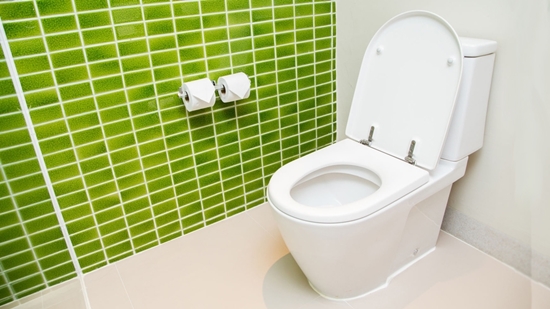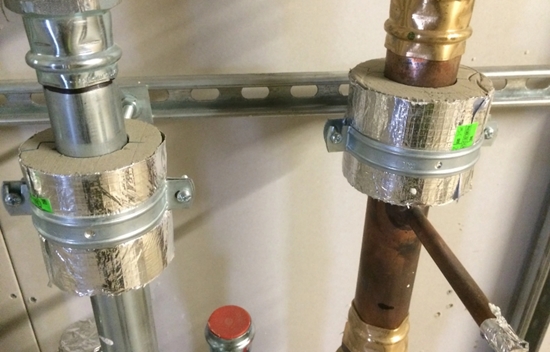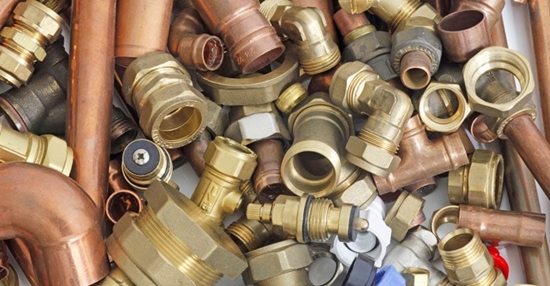Why Choose Quintessential Plumbing?
It’s simple:
-
- We Love People & Plumbing
- Lifetime Workmanship Warranty
- Totally Dependable
- Fixed Pricing
- 24 / 7 Emergency Response
- Reputable Plumbers with over 100 reviews online
$100 off hot water systems
get job discount
Book online to receive $50 off
get job discount
Blocked drain services from $88
get job discount
If you are confused with the plumbing codes, you can find information and tips here on the common plumbing codes, shunning from the cutting notches in the joists, purchasing the proper fittings and a lot more.
Plumbing is considered as the most complex aspect of most kitchen and bathroom remodeling projects. The plumbing must conform of the building codes to shun from unhealthy and dangerous conditions.
The NUPC or National Uniform Plumbing Codes generally applies to the whole country. You must also follow local codes that can be more stringent. If planning the project request data about the local plumbing code from the local building ministry. Have the plans approved before beginning to work and perform every work to the inspector’s satisfaction. Draw the detailed plan that contains the list of every material.
A. Common Codes
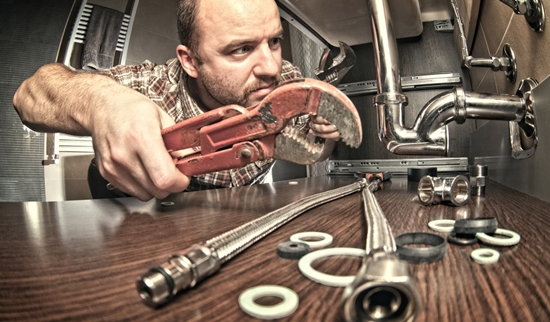
The common codes mainly concentrate on the venting. After all, the drainpipes that aren’t properly vented may run sluggishly and can release noxious fumes to the house.
Here are some of the other important codes that you can take into considerations:
1. The fixtures should not be situated too close together. It is critical in the bathroom, where the space can be at the premium.
2. Identify the appropriate pipe sizes for vents, supply lines and drains.
3. Identify the proper pipe materials. Most of the inspectors will accept the rigid copper pipes to supply the lines and the PVC for the drain lines.
4. To make sure of ample water pressure, you will need to change the present globe shutoff valve together with the total-bore ball or the gate valve that doesn’t impede the water flow. If the pressure is low, then you will need the booster pump. Where the pressure is really high, you will need the pressure-decreasing valve.
5. The setting up of the plumbing should not weaken the house structure. The inspector will require that you support joists that had been cut to put up the pipes. Some other requirements included the utilization of the fire caulking around the pipes and the placement of the protective plates above the pipes.
B. Other Significant Plumbing Codes
Properly Slope Drainpipes
In lots of cases drainpipes should slope about 1/4 inches in every running foot. Running the drain across the room that doesn’t have the basement or the crawlspace will call for careful computations. The codes will require that the vent pipes will slope 1/8 inches in every foot. Some codes will permit level vents.
How to change the toilet:
1. Use a purple primer
Use the purple primer when combining PVC pipes so an inspector may rapidly tell that a pipe had been primed. The pipes which are glued with no primer will finally leak.
2. Purchase the appropriate fittings
List the fittings with details on the plan so that you can be certain that you bought the right ones. Make sure to utilize exclusive drain fittings, like the closet bend, so that the wastewater will smoothly flow. The inspectors can have exclusive fitting requirements for unlike fixtures.
3. Evade from cutting notches in the joists
Cutting the notch in the joist greatly deteriorates it. So whenever promising bore holes by the joists instead. It calls for the careful work as the holes for the drain pipe should be at the slightly unlike levels so that the pipe may slope. Whether bored or notched long spans will need doubled joists.
4. Install Cleanouts
The codes called for clients at different points so the drain may be simply agreed in case there is a clog. For safety, install the clean off whenever you tap in the drain line except there is already a nearby one.
5. Check for the leaks
The moment that the drain lines are being assembled, the inspector will possibly try to be sure that they are not leaking. Some inspectors may simply pour the water from the pipes. The other inspectors will require that a line is corked with the inflatable drain plugs and the system will be filled with water.
6. Install the access panel
Valves, cleanouts, compression pipe fittings and fixture controls should not be enclosed by the wall or the floor surface just in case you are in need to toll on them in time. When possible, install the access panel. It most common location of access panel is at the back of a shower or a tub.
7. Use the proper transition fitting
If you are changing the pipe materials, apply the proper transition fitting. With no dielectric union, the joints in between the copper and galvanized pipe would rapidly corrode. Use an approved fitting when altering to a copper from a plastic, from cast iron to a plastic, and from ABS to the PVC.
8. Replace the old gate valves
The old plumbing normally will remain; but, the new plumbing had to meet the code. If the old galvanized pipes with the gate valves will cause the low pressure of water, you will have to change them just in order to bring in the latest pipes with sufficient pressure, like changing the ball valve with a gate valve.
9. Consider the water hammer arresters
The water hammer arresters will be required for the appliances like the washing machine. The supply pipes will need to be shielded wherever they run against or through the framing affiliate.
How to scrub the washing machine:
1. Shutoff Valves
Furthermore, the chief shutoff valve if the house, codes can require shutting off valves which take control of the part of a house. The hose bib must have the interior shutoff valve. Every toilet and faucets should have that exclusive stop valves. It will corrode the old valve and will need repacking or replacement.
2. Use the approved straps or clamps
Use the approved straps or clamps to secure the pipes. Base on most codes, the copper supply pipe should be supported in every 6 feet, black steel pipe or galvanized pipe every 12 feet, ABS or PVC drain pipe in every 4 feet, while the cast-iron pipe in every 5 feet. For safety, install more supports, more than what is required.
C. Make Sure That Pipes Are Up For Coding
1. The Branch Pipes
These are the pipes that run from a distribution pipe to the fixtures. With the general rule, you may run 1/2-inches pipe to some of the fixtures; run the 3/4-inches pipe to the hose bib or the water heater. The different fixtures situate different demands on the supply pipes. Every fixture had the demand rating from the fixture units.
2. Supply Tubes
These were the flexible lines which run from a stop valve to the faucet, fixture, or the appliance. As a universal rule run 1/2-inches supply line to every fixture except the bathroom sinks and the toilets, that uses 3/8-inches tubes.
3. Sizing Drainpipes
Use the chart to count a number of fixture component which can be linked to the drain line and with the minimum drain pipe sizes. When the toilet connects to the drainpipe, a pipe should be about 3 inches. You can check the codes of the local building.
4. Fixture Trap Size
The bathroom sink utilizes the 1-1/4-inches trap. Floor drains and showers used 2-inches traps. All the other appliances and fixtures used 1-1/2-inches traps.
Uniform Plumbing Code
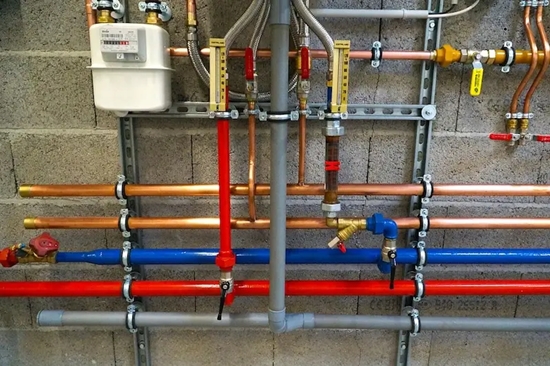
Chosen as a US National Standard, the UPC or Uniform Plumbing Code is the model code enhanced by the IAPMO or International Association of the Plumbing and Mechanical Official to administer the inspection and the installation of the plumbing systems as the ways of enhancing the health of the public, safety and welfare as well.
The UPC is widened using the ANSI or the American National Standards Institute consensus development procedures. The process brings together the volunteers that symbolize the variety of interests and viewpoints to attain consensus on the plumbing practices.
This UPC is styled to give the consumers with sanitary and safe plumbing systems while, in similar time, permitting latitude for new technologies and innovation. The public at huge is being encouraged and invited in taking part in IAPMO’s starting consensus code progress process. The code is updated in every 3 years. The code development timeline with the other relevant data are available at the website of the IAPMO.
History
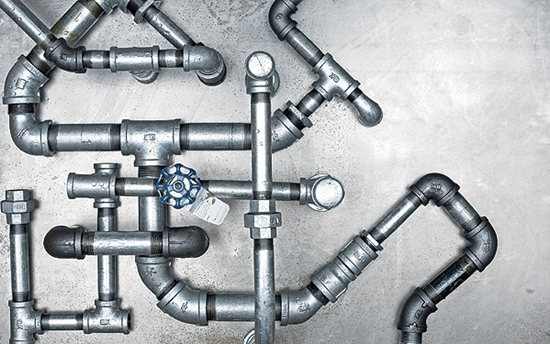
July 28, 1880 – the City & County of the San Francisco adopted the Order No. 1,587 that covered “Prohibiting Occupations and Nuisances, Defining Misdemeanors and Offensive Trades “. This Order was separated into 69 Sections & the Sections 4, 5, & 6 covered Privy Vaults. All the 3 sections contain the construction standards for the privy vaults.
– Section 4 necessitates that the privy be linked with the sewer by the pipes made of “iron-stone or the iron and cement” (ironstone that is called as Ironstone China is the ceramic materials that is the same with the terra cotta and there is no iron).
– Section 5 involved that the privy pits will not construct with no prior approval of any Health Officer and the walls and base be constructed of “brick or stone, laid in cement, about 8 inches thick”.
– Section 6 that the privy vaults will not release “foul or offensive, nauseous,” odors.
June 4, 1881 – the New York City takes on the Plumbing Law that requires all the master plumbers to take a registration with Board of Health that construction of plumbing with the projects will not proceed until a Board of Health will approve the plans of plumbing. Board of Health has been given the power to hold back by injunction of any construction that has not been approved. The law created a misdemeanor tin violating this law. The movement to make such a law was active for 5 or 6 years, but the opposition from the plumbers had banned the adoption up to 1881. Primarily, there was no funding provided for the inspections.
1882 – 2,500 dollars has been finally provided during this year. The inspections had started during the end of this year, 9,871 inspections were completed. The law obliged that only the iron pipe be utilized and that the ferules be composed of lead or brass and not of iron. Traps were also required to be aired out of the pipe which extends to 2 feet over the roof. All the basins, water closets and sink must have separate traps, plus there should be trapped in the junction with a sewer.
1883 – The Senate Bill 132 was commenced by Senator Dougherty to the California parliament that was entitled “An Act to aware the Boards of Health within countries and cities the power to control the plumbing and the drainage of the buildings”. This bill was passed, then signed into law on March 15 and then became Chapter LXXVII. This law has 7 sections.
Section 1 requires every master plumbers must be registered with a local/regional Board of Health.
Section 2 requires a regional Board of Health will publish yearly the list of every registered master plumber.
Section 3 compels that no plumbing will be installed until the written project is already submitted to a local/regional Board of Health, that it is approved.
Section 4 requires the counties, cities, local governments, special districts, to gather the revenue in funding the activity.
Section 5 Empower the local courts to implement the law.
Section 6 makes this a misdemeanor in violating this law.
Section 7 makes a law effective right away. Local government adopted the local plumbing ordinances styled after Chapter LXXVII. San Francisco City wrote and adopted the “plumbing law” on July, 1883. San Francisco started working on this plumbing law just before a state law was signed by a governor. Gov. Stoneman had a journey to San Francisco right after signing the Senate Bill 132 in revealing how the city designed to enforce the law. The San Jose City adopted “An ordinance in connection with the house drains, construction and the plumbing work linking with a sewerage system of San Jose City.”
December 2, 1884 – this was divided to 38 sections enveloping the massive range of topics.
Section 32 requires licensing of every person doing the plumbing work.
Section 34 requires every “drain layer” obtain the separate license from the plumbers.
Section 36 established the plumbing inspector.
Section 3 doesn’t permit any construction agreement of an Inspector of Plumbing & Drainage. The written description of a proposed work will have to be tendered in advance to an inspector for the approval.
Section 16 mandates use of cast iron to the interior pipes.
Section 12 mandates using of “vitrified stoneware pipes” which “run under buildings”. Sections 31, 30, 29, 28, and 27 included conditions for general inspection and testing of work performed and the request of ordinance to effecting relations with provisional sewers heretofore constructed on some streets in the city. Los Angeles City also made an ordinance making the Plumbing Inspector Office as a part of the Board of Health of the city in 1887.
May 1, 1893 – the Los Angeles City adopted the Ordinance No. 1656 on that established the examining board for the master plumbers, journeyman plumbers, registration of master plumbers and requiring the approval of Board of Health about the construction of the plumbing infrastructure by the plumbing inspector, proper penalties, and the different requirements for the construction and the materials covering the 22 Sections. There had been standards for the pipe materials in mutual ordinances.
Section 10 in Los Angeles ordinance said that: “All waste pipes and soil within a building and every drain beneath a building or in a ground within 3 feet of the exterior of the construction shall be made in what is being known to trade as extra heavier cast iron soil pipes and fitting”.
Section 6 in the San Jose ordinances says: “Each building or lot must be sewn by the ironstone or the cast iron pipe, expanding from a building, or the point of starting, out of a line of a street sewer, and then laid at the uniform grade all throughout the whole length.”In most cases the city ordinances followed a lead of the Board of Health’s State. The State Board in the biennial reported to the legislature remarks that service lines in between the house and the mains were usually made of lead, but, the “Hygiene can’t approve of the employment, for they had been accountable to be acted on, particularly by the soft water, and also in consequence there will be hazard of lead poisoning the consumers.” The local plumbing ordinances majority obliged the use of cast iron or wrought and limited the utilization of lead pipes into the connectors or placed some other restrictions on the lead pipes. As it has been noted, San Jose plumbing ordinances does not listed lead as the approved pipe materials that is the same similar to the LA ordinance, but, the LA ordinance does permit for some lead resources in some instances.
Section 17 states that: “All Joints in the cast Iron soil pipes must be filled with picked oakum then run with the molten lead fine caulked. All the connections of the lead with the iron pipe should be created with the brass ferrule of similar size as a lead pipe and then caulked into an iron pipe as precise for the cast iron pipes and linked to with a lead pipe with the wiped joint”. In the year 1884, Dr. Roger Tracy jotted down “Handbook of the Sanitary Information for the Householders” that has been published through D. Appleton & Company. The manuscript contains “Suggestions and Facts about the Care of Contagious Disease, Ventilation, Drainage, Water Disinfection, and Food”. Dr. Tracy was their NYC Health Department, Sanitary Inspector. The book has been divided into 5 chapters and Chapter 2 is on “Drainage”. The Chapter 2 was the massive chapter and with 45 pages and it contained the “Plumbing Regulations of New York City of Board of Health”. While at page 25 Doc Tracy presented the “plan of building” that was suggested by Board of Health, however, no date is given and it’s not stated whether a city adopted the proposal or not. Board of Health plans contained 57 Sections casing lots of elements of the plumbing code. One sample Section 1 stated that: “Every material must be of fine quality and are free of defects; a work should be executed in the systematic workmanlike manner” and in the Section 9 obliged that the house-drains should be composed of iron with the “fall of about a quarter of one inch to a foot, when possible, and not over than an inch to a foot”. San Francisco City would latter need that the plumbing inspectors passed an examination of the book of Dr. Tracy.
1920 – During this early year, there had been widespread complaints about the construction business regarding an inconsistency in a manner building code had been implemented. In the year 1920 the Committee on the Reconstruction and Production selected by the Senate concluded that: “The structure codes of the state have not been expanded upon scientific data, however, rather on compromises; they’re not uniform in the codes and in lots of situations involving the added cost of building with no assurance of most durable or more useful buildings. After 2 years, the recently appointed Secretary Herbert Hoover, Commerce Secretary reported to the Congress that the conflicting construction codes were progressing construction costs by 10-20%. Secretary Hoover appointed the Building Code Committee in drafting suggestions that would be utilized by the local governments in organizing codes and this committee workout with the National Bureau of Standard up to 1933, when the funding has been curtailed. In the year 1921 the BCC or Building Code Committee, also in 1925 the report has been issued entitled “Recommended Practice for the Arrangement of the Building Codes” that consisted of around 19 chapters, with Chapter 15 on the plumbing. The report was informally identified as “Hoover Code” since it has been issued under a Herbert Hoover signature, the Commerce Secretary. Chapter 15 was divided it into 14 Sections with the topics like connections and Joints, distributions and water supplies, and the House drain and the sewers.
1926 – The team of LA plumbing inspectors identified that there had been no uniform supplies for the maintenance and the installations of the plumbing systems and during that point of time diseases were rampant, lots of it spread by sanitation that is not proper. The disorder of the business was the outcome of the widely divergent plumbing applications and the uses of lots of different, usually conflicting, plumbing codes through the local jurisdictions. It has been these plumbing inspectors which understood the developing necessity of the model code that would be uniformly used across jurisdictions.
1928 – The city accepted the first ever incarnation of the uniform plumbing code enhanced by the LACPIA or LA City Plumbing Inspector Association and from the input from the committee of the plumbing inspectors, journeyman plumbers and master plumbers, and the mechanical engineers and the sanitary engineers, assisted by the public utility companies with the plumbing industries.
1945 – The upshot of the effort, the primary edition of UPC or Uniform Plumbing Code has been officially adopted of the WPOA or Western Plumbing Official Association.
1966 – It altered the name to the IAPMO in while the scope of an association’s work progresses. The code had been widely utilized over the past 5 decades by jurisdictions all throughout the US and internationally.
2003 – In the edition of this year, the Uniform Plumbing Code by the publication of the most significant milestone has been achieved. During the first ever history of the USA, the plumbing code was developed by the real consensus procedure.
2012 – The edition represented the most present approaches in a plumbing field and this has been the 4th edition enhanced under the consensus process of ANSI. Contributions to the content of the code had been created by each segment of the construction industry, including the diverse interests such as installers/maintainers, insurance, consumers, enforcing authorities, manufacturers, standards/research/testing laboratories, labor, special experts and also the users.
Uniform Plumbing Code has been supported by the ASSE or American Society of Sanitation Engineering (ASSE), MCAA or Mechanical Contractor Association of America, (PHCC-NA) or Plumbing-Heating-Cooling Contractor National Association, UA or United Association and WPC or World Plumbing Council. The associations supported the IAPMO’s commenced the consensus procedure being used to enhanced IAPMO’s standards and codes.
2018 – This is the 6th edition that will be designed as the American National Standard its current UPC included the following key alterations:
– New alternate water resources for the non-potable uses and the non-potable rainwater catchment methods.
– Chapters 16, 17 from IAPMO’s Green Plumbing with the Mechanical Code Supplement
– The New Appendix L
– New minimum plumbing amenities table in Chapter 4
– Drainage joint connection requirement and the water supply n Chapters 6, 7
Reference:
Related Pages:



